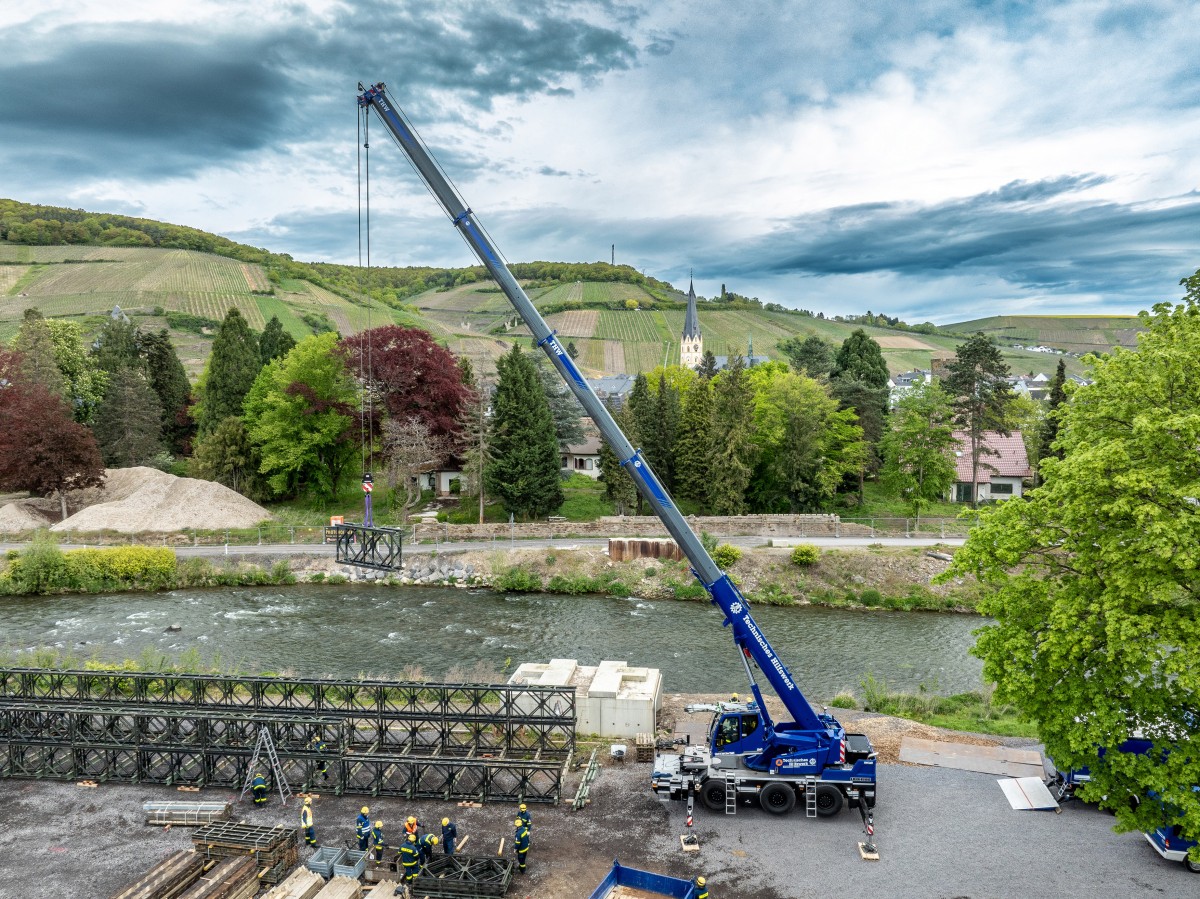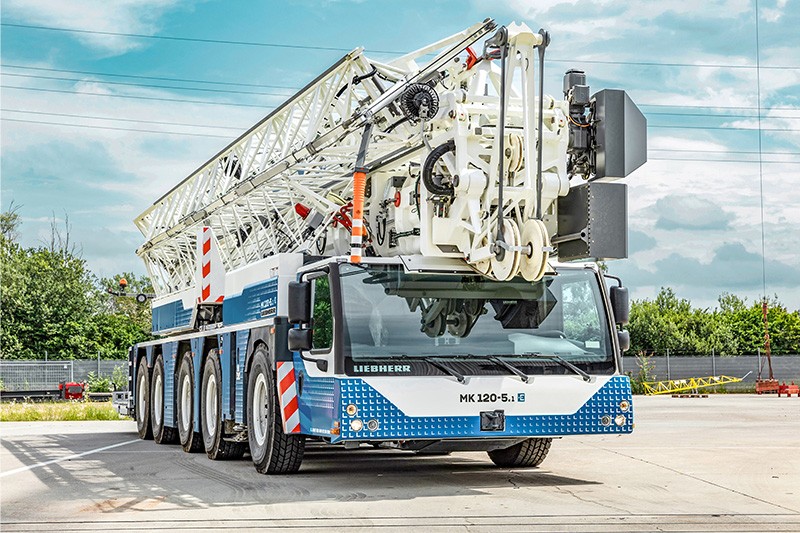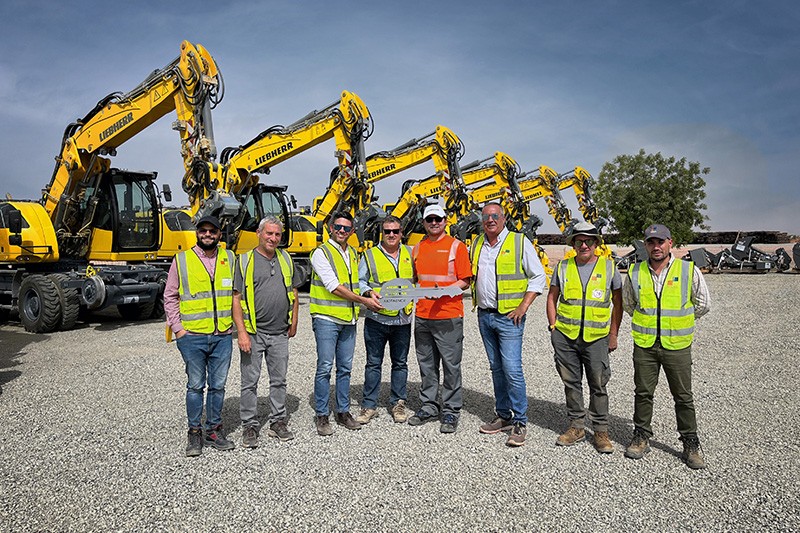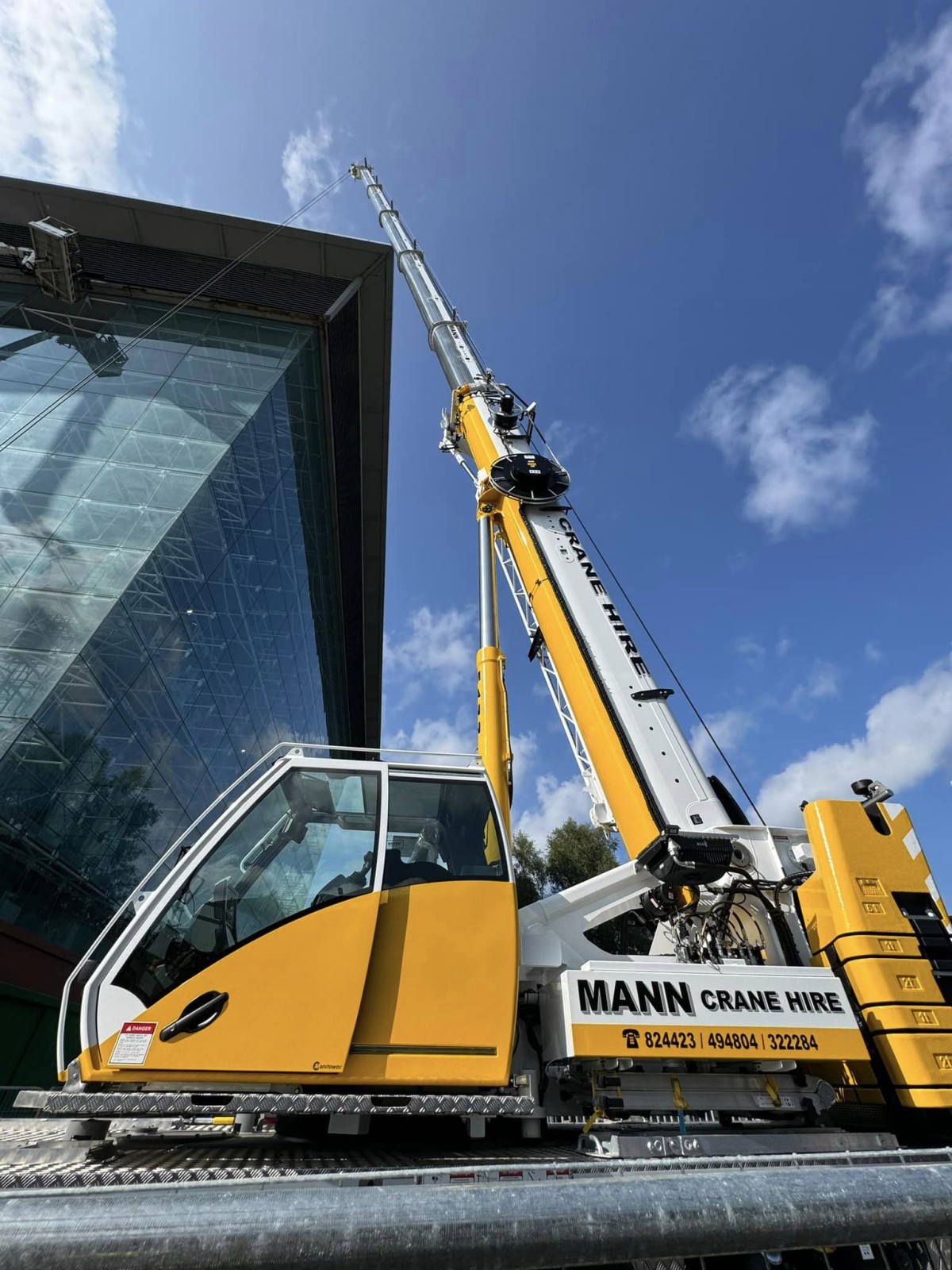Home \ International \ Liebherr LR 1800-1.0 links previously divided Berlin neighbourhoods of Moabit and Mitte
Liebherr LR 1800-1.0 links previously divided Berlin neighbourhoods of Moabit and Mitte
03/12/2020
Pubblicato da Redazione
First job for MaxiKraft’s Liebherr LR 1800-1.0 crawler crane
The new 800 tonne crawler crane hoisted a new pedestrian and cycle bridge over the Berlin-Spandau Ship Canal to connect the previously divided neighbourhoods of Moabit and Mitte. The Golda-Meir-Steg, as the 78 metre bridge is called, was named after the former Israeli Prime Minister.
The steel bridge was built in Deggendorf and had to be transported 1600 km by barge using inland waterways to get it from Bavaria to Berlin. The enormous LR 1800-1.0 crawler crane hoisted the new bridge off the barge right on schedule on 22 October. It was then turned into position using rope and man power before being lowered carefully by the crane.
The challenge for the MaxiKraft team was that there was very little space for the crane and its equipment at the site. That meant that the various components had to be delivered in precisely the correct order that they were required to set up the crane. Another difficulty was the fact that the crawler crane had to be moved ten metres back from the originally planned site so as not to damage or displace the pile foundations used to secure the bank of the canal and to build the abutment for the bridge. That meant it had to operate with an additional ten metre radius to install the 195 tonne bridge – 48 metres rather than the 38 metres, which had been calculated originally. Equipped with a 66 metre main boom, derrick system and suspended ballast with the V-frame, 70 tonnes of central ballast, 170 tonnes of slewing platform ballast and 380 tonnes of derrick ballast, the LR 1800-1.0 overcame this challenge with flying colours.
The V frame, a hydraulically adjustable ballast system which enables enormous adjustment distances with a ballast radius of between 14 and 23 metres, was once again worth its weight in gold for this job. It delivers maximum flexibility compared to the standard rigid system for large ballast radii. The derrick ballast had to be extended to the maximum radius of 23 metres to install the bridge.

Ultime notizie di Liebherr Italia

Lifting
19/11/2024
Liebherr Tower Cranes and John Paul Construction celebrate 50 years of partnership
Irish construction company John Paul Construction is celebra...

Lifting
29/10/2024
Wertz-Autokrane takes delivery of Liebherr LTM 1110-5.2 mobile crane
– The new 110-tonne crane complements the Wertz crane fleet...

Lifting
23/10/2024
New Liebherr mobile cranes for Scotland
To mark its 20th anniversary, Stoddart Crane Hire gave itsel...

Lifting
17/10/2024
German Federal Agency for Technical Relief places its trust in Liebherr compact cranes
The German Federal Agency for Technical Relief (THW) placed...

Lifting
14/10/2024
S.A.S Group expands Liebherr crane fleet
S.A.S Group expanded its Liebherr crane fleet with LTM 1300-...

Lifting
04/10/2024
Liebherr’s mobile construction crane range is expanding
MK 120-5.1, now available to order, is an agile five-axle mo...
Altri International

International
26/11/2024
Mota-Engil orders 10 Liebherr railroad excavators for a major project in West Africa
The Portuguese construction company Mota-Engil has once agai...

International
25/11/2024
New Grove GMK3060L-1 drives busy schedule for Mann Crane Hire
• Mann Crane Hire selected the GMK3060L-1 for its class-lead...

International
25/11/2024
Prinoth Unveils Expanded Production Facility in Granby, Canada
Prinoth held an event to announce the official opening of it...

International
23/11/2024
GPMat International takes delivery of two Raimondi T147s residential development in the South of France
- Official agent of France expands its product lineup with t...

International
22/11/2024
Sarens acquires additional SCHEUERLE SPMT K24 modules
renowned for its expertise in crane rental services, heavy l...
International
22/11/2024
Five WOLFF cranes modernize Oslo’s Ulven district
With a total of five WOLFF cranes of type 7534.16 Clear, Wol...










































